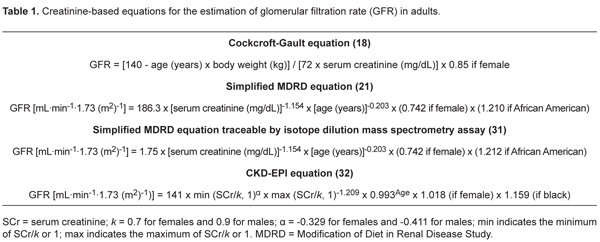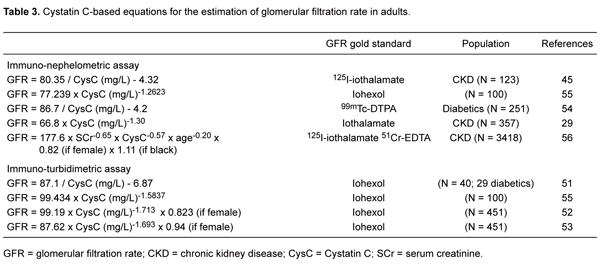Chronic kidney disease (CKD) is a world-wide public health problem, with adverse outcomes of kidney failure, cardiovascular disease, and premature death. This finding has led to the hypothesis that earlier recognition of kidney disease and successful intervention may improve outcome. The National Kidney Foundation, through its Kidney Disease Outcomes Quality Initiative (K/DOQI), and other National institutions recommend glomerular filtration rate (GFR) for the definition, classification, screening, and monitoring of CKD. Blood creatinine clearance, the most widely used clinical marker of kidney function, is now recognized as an unreliable measure of GFR because serum creatinine is affected by age, weight, muscle mass, race, various medications, and extra-glomerular elimination. Cystatin C concentration is a new and promising marker for kidney dysfunction in both native and transplanted kidneys. Because of its low molecular weight, cystatin C is freely filtered at the glomerulus and is almost completely reabsorbed and catabolized, but not secreted, by tubular cells. Given these characteristics, cystatin C concentration may be superior to creatinine concentration in detecting chronic kidney disease. This review aims to evaluate from recent literature the clinical efficiency and relevance of these GFR markers in terms of screening CKD.
Kidney function; Glomerular filtration rate; Creatinine; Cystatin C; Measurement and calculation of GFR



